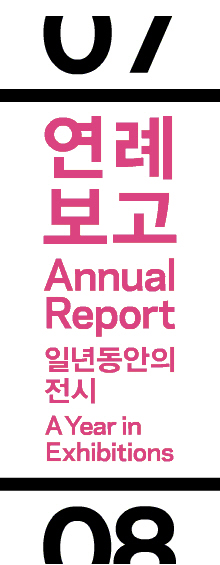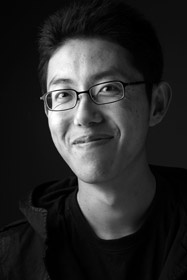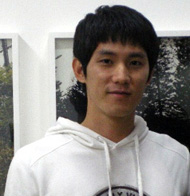Gwangju Biennale 2008 and
Looking Forward to 2010
By Park Sue-hye, Guest Reporter

Since it was the first time to encounter the GB for me as I did not have any interest in the art exhibition, the first appearance of GB was one of the culture shock for me in the art field, literally. Among the five places where the GB was being held, I went to the Gwangju Biennale Hall and Gwangju Museum of Art on Nov. 1. Under a fabulous blue sky, many families, couples and people visited the GB exhibits where diverse performances were being held.
As soon as I took a step from the entrance, among a variety of works, a long and wide transparent silk stretched out with stirring up the wind by several fans and inducing constant flow fascinated my eyes for the first time. It is Wide White Flow of Hans Haacke. It made me feel a tactile experience through the wind and flow of the different direction. The ceaseless fluttering of silk was making big and small flows like waves in the sea (Hans Haacke, Wide White Flow, 2008).
The next work arousing my curiosity was U.N Circle: In Recycled Car Doors, by Seamus Farrell in the part of position paper. It was surprising that used car doors can be materials of art. The arrangement of car doors was alike with table of the Security Council of the United Nations. Some problems related to society and the environment in the world was written with a variety of languages on the each of 16 car doors. I thought that it seemed to point out the problem of the U.N. to use used car doors to represent the shape of U.N circle (Seamus Farrell, U.N Circle: In Recycled Car Doors, 2008).
The next work that attracted my eyes was a Model for Gwangju by Dolores Zinny & Juan Maidagan. I thought these artists wanted to make the audience experience multi-dimensional view by approaching three-dimensional structure. When I first saw this work, I could not understand why this work is the model for Gwangju. Presumably, in my thoughts, it meant Gwangju city will stretch out its economy, culture, and the way of life to the variety of direction in near future (Dolores Zinny & Juan Maidagan, Model for Gwangju, 2008).
After Visiting the 2008 Gwangju Biennale
I think it may be too much to perceive and evaluate the author’s intentions, culture, and society of that country with one work. Visiting art exhibitions and appreciating some art works could become the opportunity of approaching the art field closer than before for me. However, some works were too abstruse to understand what the artist meant and I got the feeling that the atmosphere was disorder and noisy because of frolic children and a lot of people in the art center in those days. Moreover, while the Busan Biennale has a main theme ‘Expenditure’, the thing that the GB did not have a main theme unifying all the works made me confused and hard to understand why so many different ideas were represented. Also, regrettably, while 410,000 people visited the GB in 2006, the number of visitors this year has dwindled to 350,000 for 66 days, according to the statistics on Nov. 7th. I just hope not only Gwangju Biennale but Gwangju city should make an effort to keep the honor of the first Biennale host city in Asia.
**Interview
How do you feel about Gwangju Biennale 2008?

Personally, whenever Gwangju Biennale has been held every second year, I usually visit this place and appreciate some works. I think the character of the 2008 GB is to try to induce the Gwangju citizens’ participation. In past days, the public simply visited the Gwangju Biennale Hall and Gwangju Museum of Art and enjoyed some art works and then it finished. That was it. However, this year, there are a lot of sides events which could make the public appreciate and participate in this event voluntarily. So, it is possible that many spectators including Gwangju citizens appreciate not only the music performance but also beautiful works of modern art. However, the short thing that I felt about this year’s Biennale is that some works can not appeal to the audience due to their difficult contents and graphic sexual overtones and the entrance price of biennale was somewhat high for students, so it would be better if the price is reduced a little for 2010.

I visited the Gwangju Biennale in order to go out with my girlfriend taking this weekend and watch what kinds of works were displayed this year. It was really good that I could come across the current culture of the third world like Africa which is not accustomed to us through this exhibition. While I could come across diverse works, I felt something great was missing because there were not many Korean artists comparing with other country’s artists and also some of the staff was inhospitable and there were not enough places to relax compared to the size of the big exhibition. So, I just hope the GB becomes a more likable art exhibition to citizens in two years later.
[283 Review]

